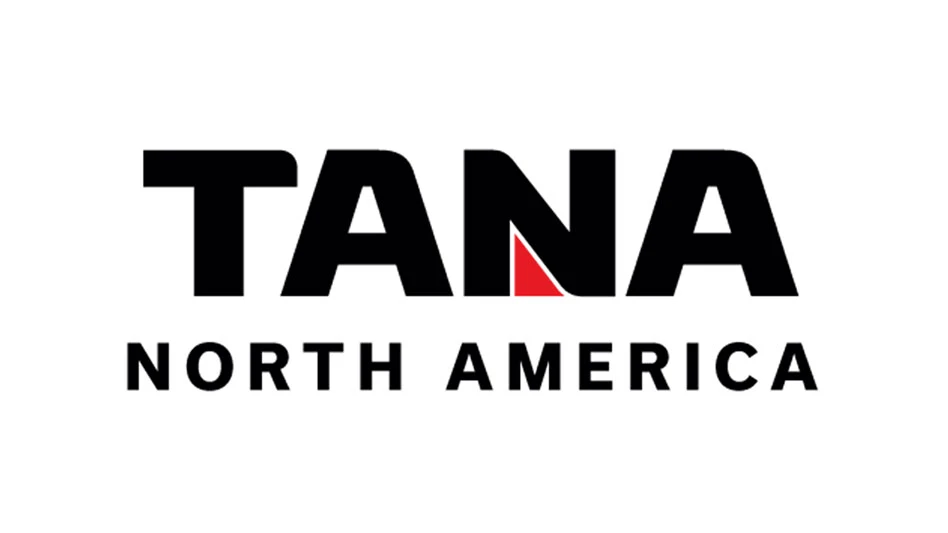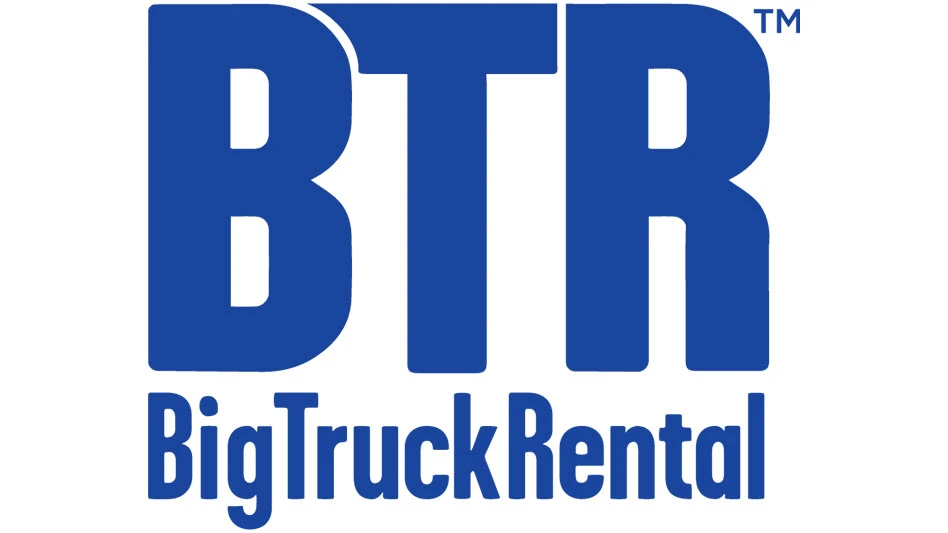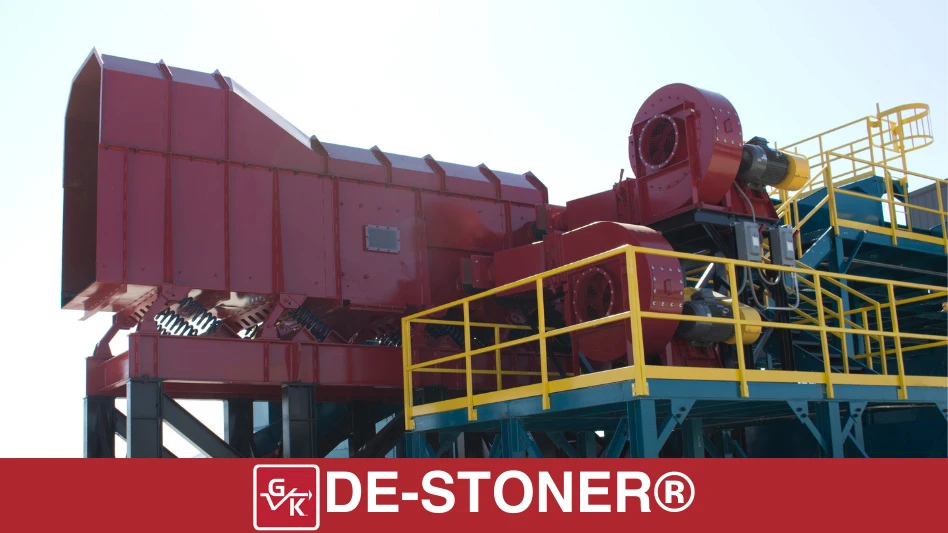
Velde Pukk, Rogaland, Norway, recently hosted a three-day demonstration event in Sandnes, near Stavanger, Norway, to showcase its wet processing plant for construction and demolition (C&D) debris. The system provider CDE, headquartered in County Tyrone, Northern Ireland, co-hosted the event, which was attended by more than 70 companies from Norway, Sweden, Denmark and Tunisia.
The new 300-ton-per-hour washing plant for C&D debris was purchased by Velde Pukk in late 2014 and is the first of its kind in Norway.
“We opened discussions with CDE a number of years ago as we see the huge opportunity presented by the recycling of C&D waste to high quality, high value recycled sand and aggregates with a wide range of applications,” says Egil Velde, managing director of Velde Pukk. “We visited a number of existing CDE installations and have watched, very closely, the technological innovations from CDE in recent years, which combine to maximize material quality and minimize waste from the process.”
As well as processing C&D debris received at the Sandnes quarry, the new CDE plant also is processing overburden from the company’s hard rock quarry operations at the same site. The CDE project was initially led by Eoin Heron, CDE regional director for Europe and Russia. He says that the flexibility offered by the CDE equipment was an important factor in winning the project.
“We looked at the overburden for Velde and determined that we could design a plant that would allow them to not only recycle the C&D debris, but also to recover material from the overburden which could subsequently be used in their integrated operations,” he says.
As well as operating the quarry in Sandnes, Velde also specializes in the production of ready mix concrete, asphalt production and laying and has its own transport fleet.
The North Sea oil industry is a big driver for the economy in this part of Norway, and the short trip from Stavanger airport to the quarry in Sandnes reveals a huge amount of infrastructure development on the ground, matched only by the number of helicopters transporting people and parts back and forth from the oil rigs off the coast.
“We are a well-established, respected name in this area and are providing material to a large number of local projects on a daily basis,” Velde says. “Our investment in the first wet processing plant for C&D waste in Norway is a symbol of our success—people expect innovation from our company because of our history.
He adds, “We hope that our investment in the CDE plant is taken as a symbol of the potential that exists for this highly valuable resource to be turned into high-quality, high-value recycled sand and aggregates.”
HISTORY LESSON
The story of Velde has been one of continuous investment and diversification since the company was originally formed in Sandnes in 1984 by the father of the current managing director.
“When my father started the business we were producing aggregates for road and pipe construction from the quarry in Sandnes,” explains Egil Velde. “Now my father has retired and I run the business in partnership with my two brothers, Harald and Reidar.”
The company has expanded significantly in the last decade, beginning with the introduction of an asphalt plant at Sandnes quarry in 2006.
By 2007, the Velde family had built what they say is the largest, most modern and environmentally friendly production facilities for crushed rock processing and asphalt production in the world. This was followed in 2008 by the establishment of a contracting business for road construction and in 2009 a ready mix concrete plant was introduced to the site.
“Our business has always been about doing things the right way,” says Egil Velde. “Our ambition to grow and build on the strong foundations that our father built always run in tandem with a desire to ensure that the business we build is sustainable and has minimal environmental impact.”
He continues, “In CDE, we found a company that shared this ethos and also shared our desire for this project to be much more than a cold business transaction. We want to build long term relationships with our partners built on trust and respect that will allow us to achieve our growth ambitions while maintaining a focus in our people, our customers and the world around us.”
SPECIAL DELIVERY

This partnership approach between Velde and CDE allowed for significant efficiencies to be enjoyed during the project delivery phase. Colum Bryson, CDE project manager on this job, says he believes the level of engagement with the Velde brothers and the wider operations team in Sandnes was critical to the success of the project.
“This is one of the largest mechanical installations that CDE has ever completed and, as with all projects, there were some very specific challenges to overcome during the design and delivery phase,” explains Bryson. “Sandnes quarry is a very busy working site so the installation and commissioning phase had to be managed with respect for the essential daily operations of the crushed rock processing plant, the ready mix concrete plant and the asphalt production plant.
He adds, “Thanks to the engagement and commitment of the full team at Velde, we were able to not only manage these issues but actually reduced project delivery time by 40 percent.”
There were 55 trucks involved during the transportation phase to deliver the new washing plant to Sandnes quarry, and due to limitations on space, it was essential that staged deliveries were organized. It also was essential that this was done in such a way as to minimize crane hire requirements on-site.
“Due to space restrictions on-site, this project posed a number of challenges if we were to ensure that there were no additional project costs incurred,” Bryson says. “We were able to achieve this as a result of the commitment that Velde demonstrated to the project from the outset. The value of getting the new plant up and running in the shortest possible time is often underestimated but not in this instance.”
A concrete pad was constructed as were a variety of concrete product bays to facilitate the introduction of many radial product conveyors on the plant.
“The concrete pad at Sandnes quarry is an example of how all projects such as this should be accommodated,” says Bryson. “The long-term benefits of this are huge.”
The benefits include easier and more efficient movement of site vehicles around the site and quick, easy and safe access for essential plant inspection and maintenance, according to Bryson.
“Our ambition to grow and build on the strong foundations that our father built always run in tandem with a desire to ensure that the business we build is sustainable and has minimal environmental impact.” – Egil Velde
The specification of several radial stockpile conveyors for the washed recycled sand and aggregates is another example of the Velde commitment to minimizing the environmental impact of its operations.
“This has the effect of significantly reducing transport movements on site bringing significant cost savings,” says Harald Velde, operations director at Velde. He adds, “This also eliminates unnecessary double handling of our products. In addition to the cost benefits, the reduction in transport movements also reduces health and safety risks on site—safer, happier people are more productive people, and this was a big factor for both us and CDE in the design of our new plant.”
HOW IT’S DONE
Feed material is first delivered to two R2500 primary screening units located side by side and with integrated apron feeders, which split the feed across two separate 150-ton-per-hour processing lines. From the feed hopper, material is sent to the R2500 primary screening unit and the over 4-inch material is removed via a double deck 16-foot-by-5-foot grizzly screen. The remaining material is discharged to two horizontal feed conveyors.
The 4-inch-minus material then arrives at two AggMax 151 modular logwashers, where a prescreen removes all the ½-inch-minus material, which is delivered directly to the EvoWash 201 sand washing plant.
“The prescreen is essential at this stage to ensure the efficient operation of the AggMax,” says CDE’s Heron. “Not only does it ensure that the aggregate fraction is satisfactorily scrubbed but it minimizes wear in the AggMax and maximizes sand production.”
After aggressive scrubbing in the two AggMax units, the ½-inch to 4-inch recycled aggregate is sent to a ProGrade P2-108 sizing screen. The two AggMax machines also include a trash screen at the rear, which removes any lightweight and organic contamination from the recycled aggregate product. Any sand liberated during the attrition phase also is sent to the EvoWash sand washing plant and ensures maximum product yield from the C&D debris feed.
The ProGrade P2-108 sizing screen is from the new Infinity screening range from CDE. It includes a patented side wall construction, which removes unnecessary weight and reduces the power required to run the screen. The screen is set up to produce up to a 1/4-inch; 1/4-inch to 1/6-inch; 1/6-inch to 1/8-inch; and 1/8-inch to 4-inch product, all of which are stockpiled using static and radial stockpile conveyors.
The EvoWash sand washing plant produces two grades of sand—a 0-inch to 0.08-inch; and a 0.08-inch to 0.15-inch. The 0-inch to 0.08-inch product is used in the asphalt production plant at the quarry, while the 0.08- to 0.15-inch product is used in the concrete plant.
“Given the space restrictions on-site it was essential that full water recycling and sludge management was included on the new plant for Velde Pukk. There is no option to include settling ponds at Sandnes quarry but the Velde commitment to minimizing environmental impact meant that this was an essential requirement of the new plant anyway.
“Not only does the plant require much less space with the full water and sludge management system but the fresh water requirement is 95 percent less than if we simply included settling ponds. It also results in a cleaner, safer and more productive site,” explains Harald Velde.
The wastewater from the plant is first delivered to an AquaCycle A1500 thickener where it is dosed with flocculant. This forces the very fine particles of silt and clay to bind together and sink to the bottom of the tank. Meanwhile, the recycled water overflows the peripheral weir and is stored in a concrete buffer tank before being recirculated to the washing plant.

The sludge at the bottom of the AquaCycle thickener is discharged automatically at certain pressure and is sent to another concrete buffer tank which is fitted with a set of agitators to ensure the consistent sludge is delivered to the overhead beam filter press.
The filter press model specified is one of the largest available and has 169 plates each measuring 7 feet by 7 feet. These plates press the sludge to remove more water before the filter cake is discharged to a bay below.
“We are currently using the filter cake—which has a dry solids content in excess of 80 percent—for the construction of embankments, which means that we have eliminated waste from this stage of the process,” explains Harald Velde. “Of the 300-ton-per-hour feed to the plant, the only waste from the process is made up of the lightweight and organic contamination removed during the attrition phase.”
LOOKING FORWARD
The new CDE plant at Sandnes quarry will divert approximately 600,000 tons of C&D debris from landfill every year. Velde Pukk aims to develop the market for recycled material in Norway in the months and years ahead through extensive testing and use of material in its own operations.
The business case for the CDE plant was made on the basis of the cost savings that would be realized as a result of the diversion from landfill, but that is not enough for the Velde brothers, who see this new plant as an opportunity to build the brand value of recycled material and increase its use not only in Norway, but across Europe and the rest of the world.
“We are committed to finding more sustainable ways to meet growing demand for our mineral reserves,” says Egil Velde. “Construction, demolition and excavation waste is a hugely valuable resource that can help us extend the life of our natural reserves for future generations.”
This is a view that is shared by all three of the Velde brothers. “We wouldn’t accept a wasteful approach to the processing of virgin materials, so it’s time that the same approach was taken with C&D waste,” says Harald Velde.
The approach taken by Velde signals not only a change in attitude to C&D debris and the potential it offers, but also that the industry is in good hands as it seeks to secure future innovation that will keep the sector thriving.

Explore the November 2016 Issue
Check out more from this issue and find your next story to read.
Latest from Construction & Demolition Recycling
- C&D World session preview: Key strategies for effective fleet maintenance
- Rotochopper hosts equipment owners at annual training program
- EAF mill underway in California
- On the move
- Viably teams with Turmec on materials processing systems
- Tight supply poised to keep recycled steel prices buoyant
- Untha shredder prepares SRF in the UK
- Mammoet on the job at Montréal Olympic Stadium project





